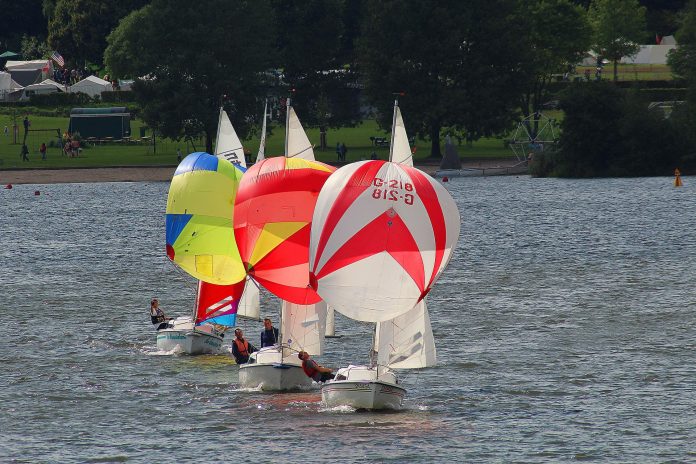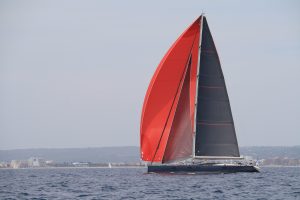

Excerpts from an excellent article on “Wind Shift Rules of Thumb” written by by good friend David Dellenbaugh of Speed and Smarts – https://www.speedandsmarts.com
Playing the shifts is all about minimizing the distance sailed around the course. Whether it’s light or breezy, keep your eyes on the compass and identify the type of shift before reacting.
Windward Legs
Is the wind oscillating (phasing back and forth), or is it shifting persistently in one direction? Your strategy will be very different in each of these conditions. Here are some rules of thumb.
-
Tack on Headers
In an oscillating breeze, your goal is to stay on the lifted tack so you sail the shortest distance to the weather mark.
-
Keep off the laylines
Laylines are a dead end when the wind is shifting. If you get lifted, you will overstand and boats to leeward may fetch the mark ahead of you. If you get headed, the boats to leeward and ahead will tack across your bow. You have very little room to tack on the shift.
-
Stay on the tack that takes you closer to the mark
If you are not sure whether you are on a lift or a header, get on the tack where your bow is pointing closer to the mark.
FREE CHAMPIONSHIP SAILING GLOVES
-
When in doubt, sail the longer tack first
There are two benefits to sailing this tack first. 1) It is more likely that it’s the lifted tack. 2) It will head you toward the middle of the course, where you’ll have more room to play the shifts.
-
Go in the direction where you look good
Watch the boats all around you and sail in the direction where you begin to have a relative gain. When a wind shift puts you ahead of another boat, you should take that wind shift across the bow of the other boat to consolidate your gain. If other boats are suddenly crossing your bow, tack to leeward of them. Then wait for the next shift in your favour.
-
Sail toward a persistent shift
When the wind is moving steadily in one direction, you can’t simply tack when you get headed. You have to keep sailing deeper into the header so you get as much benefit as possible. Be sure that you don’t get to the layline too far from the mark. If you do, you will likely overstand as the wind continues to shift.
-
When you get close to the mark, play oscillations like persistent shifts
In an oscillating breeze, there is a point near the windward mark where you have to play any shift like a persistent shift. Let’s say that on a given day each oscillation takes about four minutes. When you get within four minutes of the mark, you’re only going to have one more shift, so you must play this like it is a persistent shift. This is because by the time it shifts back the other way, you’ll be around the mark.
Downwind Legs
- Downwind, Gybe on The lifts – The object on a run is to steer a course that keeps the boat going fast and aimed close to the mark. Stay away from the downwind lay lines and keep on the gybe that points you closer to the mark.
- Sail toward the puffs and stay in them as long as possible – There is nothing that will let you sail lower and faster than a good puff. Someone on your boat should always be looking behind to see how you can get to the best air. This will this let you steer more toward the mark and it will keep you in the puff longer.
- Sail away from persistent shifts – On a run, you should take your first gybe away from a persistent shift. This allows you to sail on both gybes in relative headers, which will bring you to the leeward mark faster.
SAILING TO WIN BOOK AND BONUSES
Reaches
- Sail up and down in shifts and puffs – You should sail low in the puffs and high in the lulls to maintain speed. Keep track of the wind and try to maintain roughly the same apparent wind angle down the reach. Sail slightly high of the mark when you’re on a lift, and slightly low of the mark when you’re headed. In shifty and puffy winds, a zigzag course can get you there faster than sailing a straight line.
- Sail a low arc in breeze that’s dying or persistently lifting – When you have a dying breeze, get low while you have breeze and save your higher heading angle for the second half of the leg when the breeze is lighter and you need more speed. The second time to go low is when you’re being continuously lifted. Sail low early (in a relative header) so you can head higher later and maintain speed even though you are lifted.
- Sail a high arc in breeze that’s building or persistently heading – If it looks like you will be headed or if the breeze will increase as you sail down the reach, go high and fast early in the leg. Changes in the wind will help you get down to the mark later.

